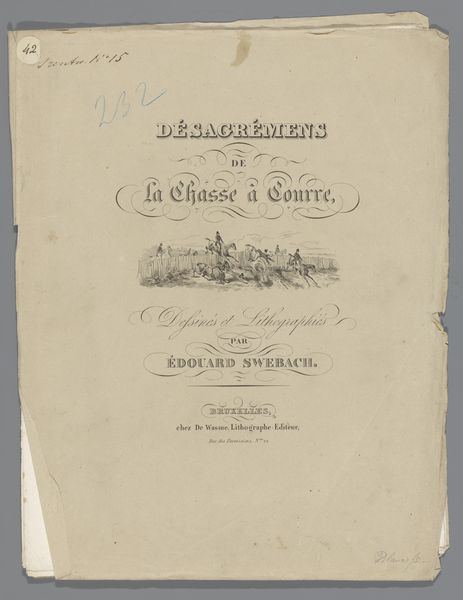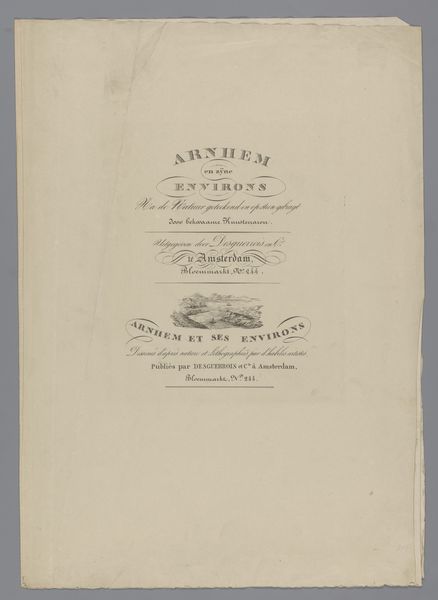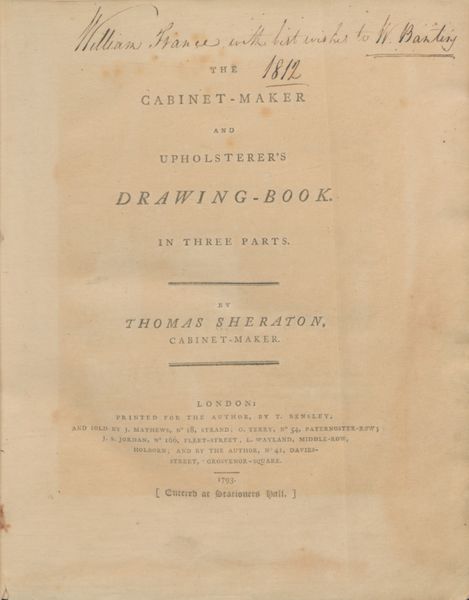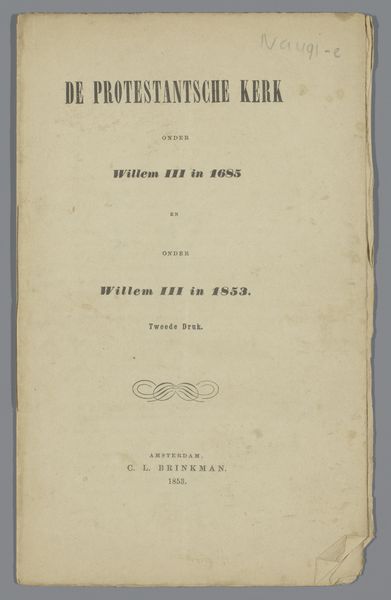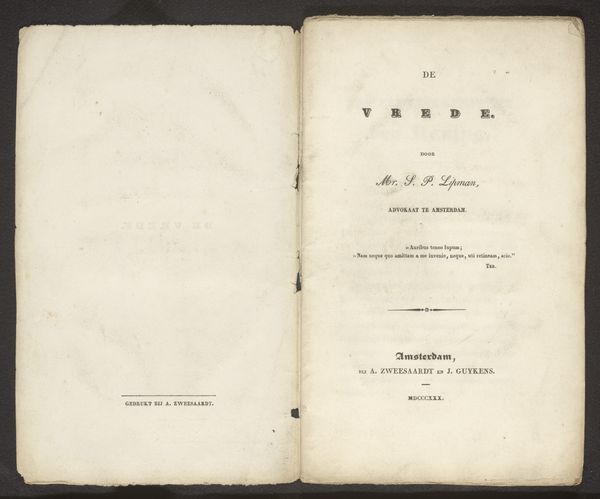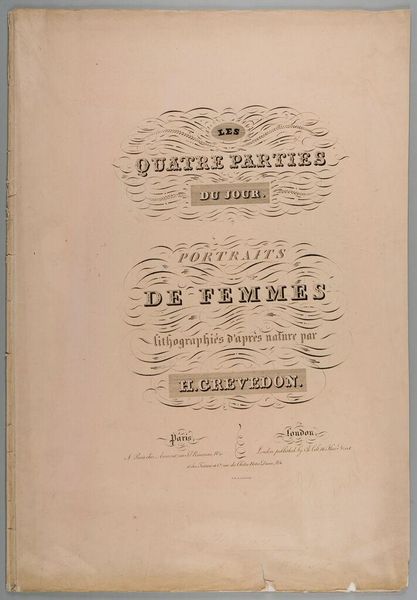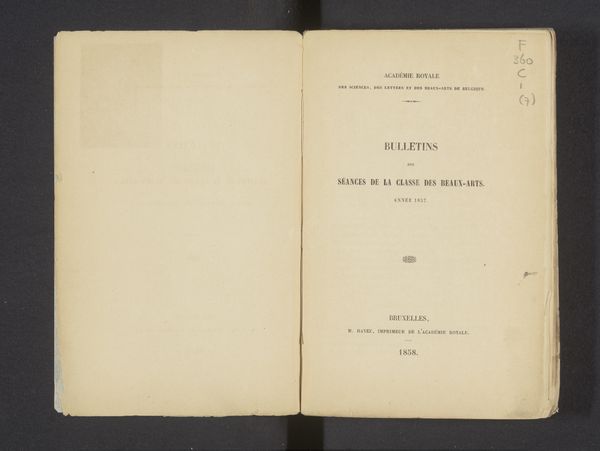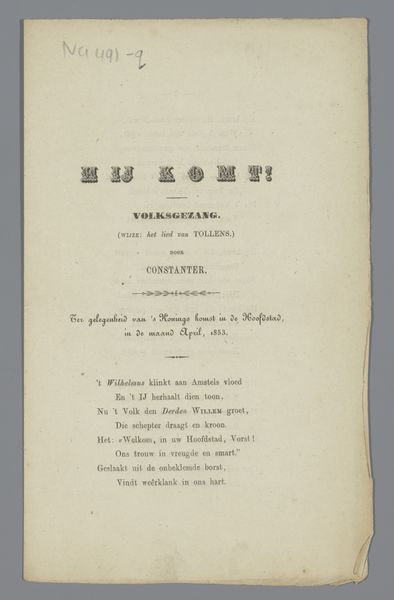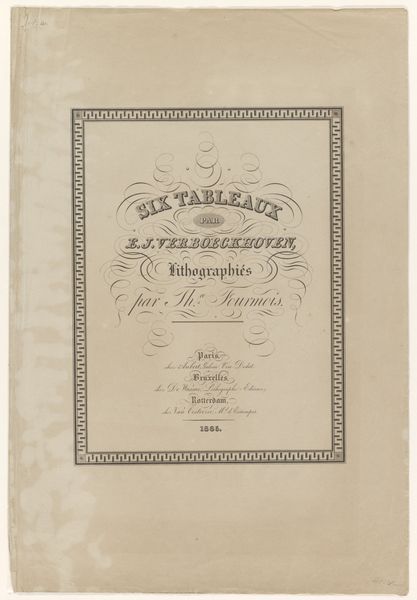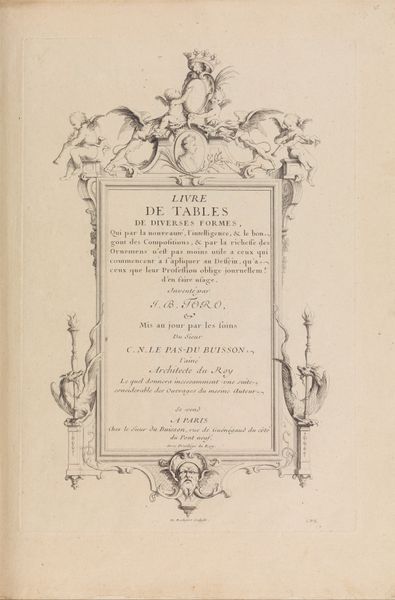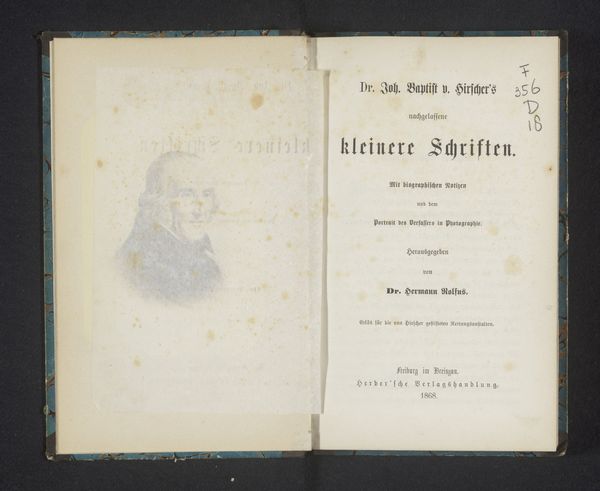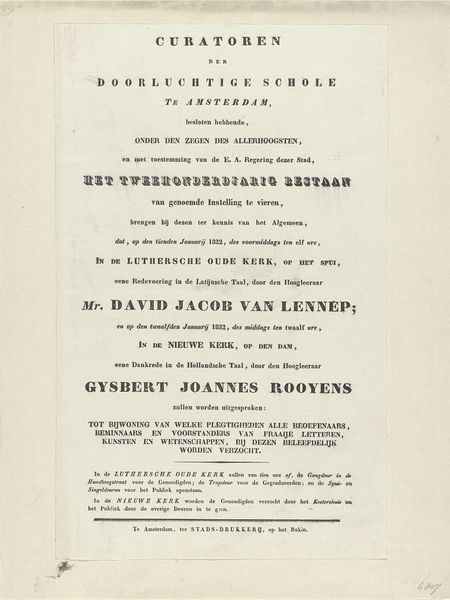
Dimensions: height 553 mm, width 370 mm, height 553 mm, width 740 mm
Copyright: Rijks Museum: Open Domain
Editor: This is the cover for “Hamlet,” made before 1864 by Eugène Delacroix. It’s a lithograph, a print with some elegant typography. It gives me a serious, somewhat somber vibe. I'm curious, what stands out to you in this piece? Curator: Well, consider Hamlet itself: a play saturated with themes of death, betrayal, and moral corruption. The stark typography here isn’t just functional, it visually prepares us for this world. Notice the old-fashioned lettering and the publisher's address "à Paris"; these carry the weight of a specific historical context and cultural memory. How might this influence the viewer’s expectations even before opening the book? Editor: I hadn’t thought about the historical context affecting the viewing so directly, almost like a symbolic portal into that era. It feels deliberate, almost… theatrical? Curator: Exactly! The very act of publishing a book, particularly one by Shakespeare interpreted by Delacroix, becomes a cultural event, imbued with symbolism. Even the subtle flourish around "par" could symbolize the artistry of the interpretation. How does knowing it is from a series of lithographs of "onze sujets dessinés" change your perspective? Editor: Knowing that this is just one piece of eleven changes my view a lot. The cover's tone suddenly speaks about the series as a whole. I am wondering, what impact would it have on audiences seeing this in its own time? Curator: Its contemporary audience would immediately associate Delacroix with Romanticism and Shakespeare with timeless tragedy. This cover primes their understanding, inviting them to partake in this very particular symbolic encounter between word and image. Editor: I see, so the cover functions as much more than just an introduction, but also an intersection of historical context, artistic vision, and the themes contained within. Curator: Precisely! And each visual element is an integral symbol for that exchange. It is a great way to explore visual cultural memory and continuity.
Comments
No comments
Be the first to comment and join the conversation on the ultimate creative platform.
